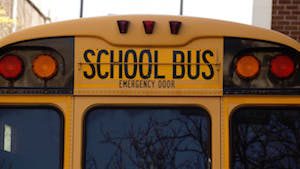
The “money follows the child” model of school funding can have a negative impact on local communities.
Claire McInerny, writing for State Impact Indiana, has a good article on challenges faced by Wabash County and City Schools due to the State’s approach to funding and the loss of students in their districts. The State takes a “money follows the student” approach to school funding which leads to problems when students move elsewhere. Efforts to keep the schools going have resulted in Wabash City Schools closing schools. Now their gifted program takes place in a former storage room.
Scenarios like this exist across the state. Over the last decade, almost all rural school districts lost students. And because state funding is based on enrollment, when students leave, so does cash.
On top of this, consolidation and school closures upset parents, who may elect to move their children, which means even less money.
I’ve argued against money-follows-the-child funding on any number of occasions. It’s misguided because children are not widgets — some cost more than others to fund. It’s also misguided because the public dollars aren’t an entitlement for individual students. After all, lots and lots of people without children pay into the system. Those dollars are ultimately investments communities are making in themselves. Recognition should be given to the fact that public money is ultimately paying for a public good — a public good that both educates the children and creates a public institution that makes the community a better place to live.
It looks like, under the current funding model, Wabash City and Wabash County are looking at County-wide consolidation.
I have spent much of my career in public finance working with and in rural schools. I absolutely understand their plight and commiserate with lots of the issues they are having.
With that said, Wabash County and City schools are a perfect example of poor school management. Lets look at the enrollment stats:
Enrollment 2005-06
Wabash City – 1481
Wabash County – 2613
Enrollment 2016-17
Wabash City – 1507
Wabash County – 2065
Total in County –
2005-06 – 4094
2016-17 – 3572
They should have consolidated 10 years ago as this is simply a math problem. 3500-4500 students is a reasonably sized and very efficient school district.
Let’s look at their structure. Wabash County schools have 3 high schools, though one is an alternative program. They shouldn’t have 2 traditional high schools in that district.
Don’t complain about losing money when enrollment shifts when you aren’t managing yourself efficiently. I am guessing part of the mismanagement is due to mascot fights as much as anything. Simply put, Wabash County should not have 2 school corps and 3 traditional high schools, and I am sure there wasn’t anytime in the past that it could justify it either.
Doug, your logic is flawed. The point of schools is to educate children, not employ adults. If a district is losing population, it should get less funding.
Areas with lower population density have smaller schools due to lengthy transportation distances. Typically, they are also lower income. The kids there deserve a good education too. Sure, there are some poorly managed school districts, but current policy is all about keeping suburbia flush with cash and starving everybody else. Funding a school that encompasses 300 square miles and has 1500 students at the same per student rate as one that covers 20 square miles and has 9000 students is the 21st century equivalent of ‘separate but equal’.
It seems axiomatic that when districts lose enrollment they still have a large fixed cost base that cannot be shed and must still be covered. Just a guess, but schools that are 1/2 full of kids are not that much cheaper to run than one that is 4/5’s full.
We always here that refrain of equality of opportunity, not of outcome. Nice talk. No walk.
90% of a school corporation’s expenditure are directly tied to salary and benefits. Of that 90% a vast portion is for classroom staff (teachers and aides).
1/2 full should mean approximately half staffed. That is a massive reduction in the cost of running a school building.
Thanks for letting me know. That puts a whole different spin on the analysis.